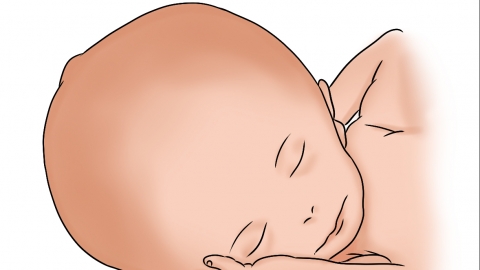What causes the enlargement of the head due to hydrocephalus?
In general, the possible causes of hydrocephalus leading to an enlarged head circumference may include infectious meningitis, traumatic brain injury, cerebrovascular disease, congenital hydrocephalus, and Foramen of Magendie occlusion syndrome. Symptomatic management through medication or surgical treatment is required. If physical discomfort occurs, prompt medical attention should be sought to avoid delaying treatment. Detailed analysis is as follows:

1. Infectious Meningitis
Bacterial, viral, or fungal infections can cause inflammatory reactions in the meninges or brain parenchyma. The release of inflammatory mediators may lead to increased production of cerebrospinal fluid (CSF) or impaired absorption, resulting in hydrocephalus. Meningitis or encephalitis may also cause inflammatory narrowing or adhesion of CSF pathways, further worsening hydrocephalus. It is recommended to follow medical advice to use medications such as Acyclovir Tablets, Ornidazole Dispersible Tablets, and Dexamethasone Acetate Tablets to alleviate symptoms.
2. Traumatic Brain Injury
Severe traumatic brain injury may cause mechanical damage to the cerebrospinal fluid circulation system, such as intraventricular hemorrhage or cerebral contusion, obstructing CSF circulation and leading to hydrocephalus. Additionally, post-traumatic inflammatory responses may also impair CSF absorption. Symptoms may include headache, nausea, and vomiting. Treatment should be based on the severity of the injury and associated complications, such as ventriculoperitoneal shunt or decompressive craniectomy.
3. Cerebrovascular Disease
Brain tissue damage caused by cerebral hemorrhage or vascular occlusion can lead to disturbances in CSF circulation, such as blood clots blocking CSF pathways or cerebral edema compressing CSF outflow routes, resulting in hydrocephalus. This is typically accompanied by sudden severe headache, altered consciousness, hemiplegia, etc. During the acute phase, urgent management of the cerebrovascular event is required, such as thrombolytic therapy or vascular interventional treatment, to reduce brain damage and restore CSF circulation.
4. Congenital Hydrocephalus
Congenital hydrocephalus often results from abnormalities in the CSF circulation system during fetal development, such as obstruction at the outlet of the fourth ventricle or aqueduct stenosis, preventing normal circulation and absorption of CSF. This leads to CSF accumulation within the ventricles, increased pressure, premature closure of cranial sutures, and abnormal head enlargement. It is recommended to undergo surgical treatment under medical guidance, such as ventriculoperitoneal shunt or endoscopic third ventriculostomy.
5. Foramen of Magendie Occlusion Syndrome
Foramen of Magendie occlusion syndrome is a rare congenital brain malformation characterized by enlargement of the fourth ventricle and underdevelopment of the cerebellar vermis. These abnormalities can interfere with the normal circulation and absorption of CSF, causing hydrocephalus. It is typically accompanied by an enlarged head circumference, increased intracranial pressure, delayed motor and intellectual development, etc. Surgical treatment options include ventriculoperitoneal shunt or tethered cord release surgery.
Pregnant women should undergo regular prenatal check-ups to detect any fetal brain developmental abnormalities early and take timely interventions.
References
[1] Cao Chenhui, Zhao Jianyong, Zhang Weihua. A Case of Progressive Muscular Dystrophy Combined with Obstruction Syndrome of the Fourth Ventricle [J]. Clinical Focus, 2010, 25(16): 1387.
[2] Liu Haitao. Popular Science Knowledge on Congenital Hydrocephalus [J]. Health Must-Read, 2024, (20): 70-71.




